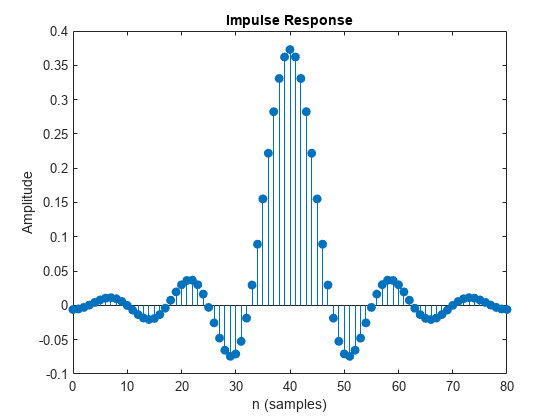impz
Impulse response of discrete-time filter
Syntax
Description
impz( plots the magnitude and
unwrapped phase of the impulse response of the specified filter.rcfilter)
You can use the impz object function for real and complex
filters. When you omit the output arguments, impz plots only the real
part of the impulse response.
For more input options, see the impz function.
Examples
Input Arguments
Output Arguments
Version History
Introduced in R2013b
